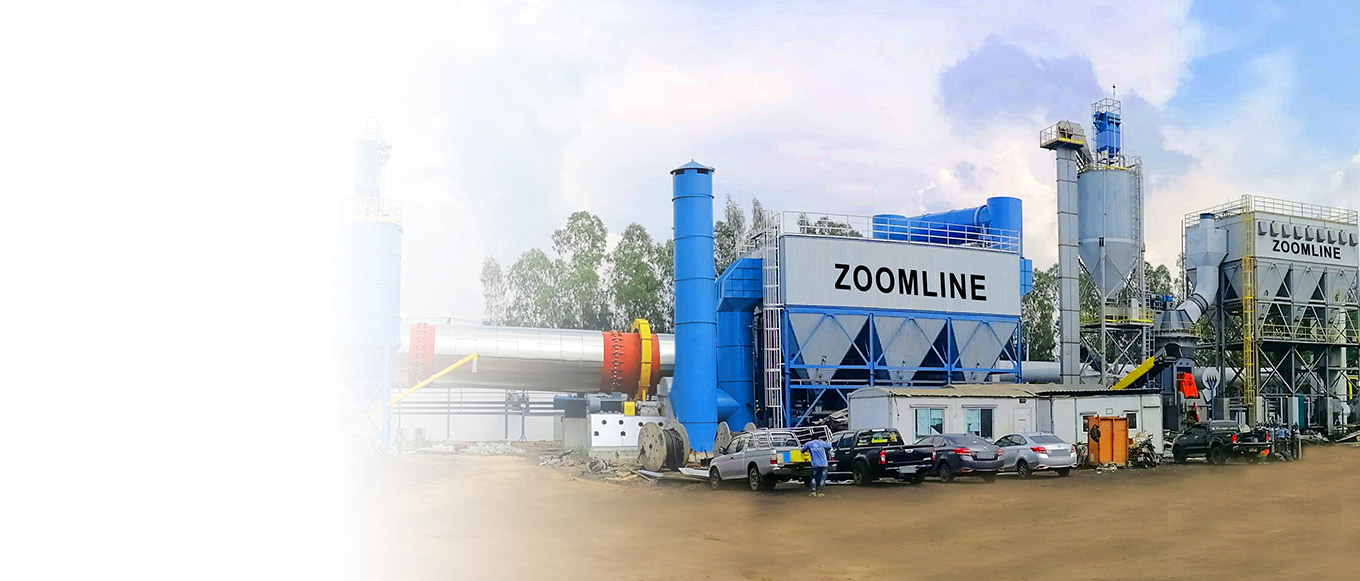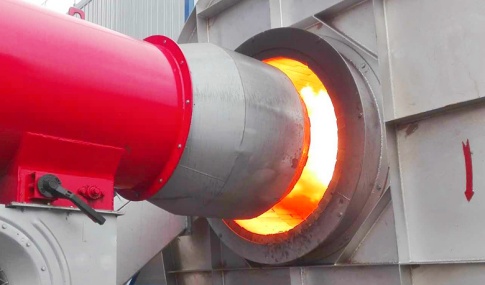What is Asphalt Plant?
Asphalt plant (also known as asphalt mixture mixing equipment or hot mixing equipment) is an industrial facility that mixes aggregates such as sand and gravel with asphalt binder to produce asphalt mixture. This type of equipment plays a critical role in road construction — the mixture it produces is widely used in paving projects such as highways, municipal roads, and parking lots.
From an engineering perspective, asphalt materials are preferred due to their durability (capable of withstanding heavy traffic and harsh weather conditions), flexibility (adapting to temperature changes and foundation deformation), safety (anti-slip surfaces reduce accident rates), and cost-effectiveness (fast construction speed and low maintenance costs). What is even more noteworthy is that the recyclable nature of asphalt (through the incorporation of recycled asphalt pavement, or RAP) gives it a significant advantage in green infrastructure projects.
What Are The Components Of Asphalt Plant?
An asphalt mixing plant consists of several essential components:
Cold Aggregate Feeding Bin
As the raw material inlet, the cold aggregate feeding bin is used to store aggregates of different particle sizes (such as manufactured sand and crushed stone) and controls the aggregate flow rate through adjustable gates and conveyor belts. A multi-bin design (typically 3–6 bins) enables precise blending of aggregates of different specifications, ensuring stable aggregate gradation in the mixture.
Drying Drum
The drying drum is a critical component for removing moisture from aggregates. It uses a rotating cylinder and internal agitating plates (blades) to ensure uniform heating of aggregates in a high-temperature environment. Heating is typically achieved using natural gas, fuel oil, or coal, with temperatures controlled between 160-190°C to ensure adequate adhesion between aggregates and asphalt.

Burner System
The burner provides the heat source for the drying process, and its performance directly affects heating efficiency and energy consumption. Modern burners often use intelligent temperature control technology, which automatically adjusts fuel supply based on aggregate moisture content, while reducing pollutant emissions through low-nitrogen combustion design.
Asphalt Storage Tank
The asphalt storage tank features a double-walled insulated structure with built-in heating coils (steam or electric heating) and a mixing device to maintain asphalt in a liquid state at 150-170°C. The tank is equipped with a liquid level sensor and a transfer pump to precisely control asphalt usage and prevent insufficient flow due to low temperatures.
Mixing System
The mixing system is the core of mixture preparation, divided into two types: twin-shaft forced-action mixers and paddle-type mixers. Through high-speed rotating blades, heated aggregates, asphalt, and fillers are uniformly mixed here, with a typical mixing cycle of 45-60 seconds, ensuring the oil-to-aggregate ratio error does not exceed ±0.3%.
Control System
Modern mixing plants are equipped with PLC intelligent control systems that monitor real-time parameters throughout the entire process, including aggregate supply, temperature regulation, and asphalt metering. The operator interface supports visual data management, allowing operators to adjust production formulas via touchscreens to achieve automated and intelligent production.
Dust Collection System
The dust collection system consists of cyclone dust collectors and bag-house dust collectors, which capture dust generated during drying and mixing processes. The bag-house dust collector achieves a filtration efficiency of over 99%, ensuring emissions comply with environmental standards (typically ≤30 mg/m³), thereby minimizing the environmental impact of construction activities.

Filler Storage and Supply System
Fillers (such as limestone powder and fly ash) are added to the mixture via screw conveyors or pneumatic conveying systems, enhancing the asphalt’s bonding properties. The system is equipped with high-precision weighing scales, with filler addition errors controlled within ±1%, ensuring the mixture’s resistance to deformation.
Conveyor Belt System
The conveyor belt system spans the entire plant, responsible for material transfer such as cold aggregate into the drying drum and hot aggregate into the mixing drum. The belts are made of wear-resistant rubber material, combined with tensioning devices and anti-drift systems, ensuring continuous material conveyance without spillage and improving production efficiency.
Weighing System
The weighing system consists of load cells and digital displays, providing real-time measurement of aggregates, asphalt, and fillers. The measurement error for aggregates is ≤±0.5%, and for asphalt, it is ≤±0.3%. Precise mixing ratios ensure consistent performance of the mixture.
Key Component Differences Between Drum Mix and Batch Type Asphalt Plants
| Type | Drum mix asphalt plant | Batch mix asphalt plant |
| Production Process | Continuous production, aggregate and asphalt are mixed synchronously in the drum | Batch production, each component is accurately added according to the ratio |
| Mixing Equipment | Integrated drying and mixing drum | Independent drying drum + forced mixer |
| Material Storage | No hot aggregate silo, directly enters the mixing process | Equipped with a hot aggregate elevator and vibrating screen |
| Dust Collection System | Single-stage dust collection, simple structure | Multi-stage dust collection, higher filtration precision |
| Control System | Basic automation, suitable for single-formula production | Intelligent control system, supports multi-formula switching |
| Application Scenarios | Large-scale road construction projects with stable demand | Municipal engineering, airports, and other high-precision projects |
Maintenance Requirements of Key Asphalt Plant Components
Mixing System Maintenance
Daily Inspection: Inspect the wear condition of the mixing blades and liners weekly. Replace them promptly when the wear depth exceeds 10 mm;
Operational Monitoring: Listen for abnormal noises from the mixing pot. If bearing overheating (temperature > 70°C) or abnormal vibrations are detected, shut down the machine immediately for inspection and maintenance;
Lubrication Management: Apply high-temperature grease to the mixing shaft bearings every 500 hours to prevent dry friction and equipment damage.
Burner Maintenance
Air Tightness Inspection: Inspect gas pipeline connections with soapy water monthly to eliminate leakage risks;
Ignition System Maintenance: Clean carbon deposits from the ignition electrodes, test the sensitivity of the solenoid valve, and ensure a 100% ignition success rate;
Cold-state testing: Simulate the combustion process quarterly to verify that parameters such as air pressure and fuel ratio are properly matched.
Dust Collection System Maintenance
Filter bag inspection: Inspect filter bags every 100 hours for damage, particularly at the bag seams, and replace damaged bags promptly;
Dust Removal Device Maintenance: Check the pulse valve blowing pressure (typically 0.4–0.6 MPa), clean accumulated water from the air tank to prevent filter bags from becoming damp and clogged;
Fan Maintenance: Clean accumulated dust from the impeller every six months, adjust the belt tension to avoid increased noise due to imbalance.
How Often Do The Main Components Of The Asphalt Mixing Plant Need To Be Maintained?
New machine operation for 100 hours
Complete the basic inspection of the equipment break-in period. Use a professional torque wrench to inspect each bolt on critical components such as the mixing main unit, conveyor belt drive mechanism, and batching scale body, with particular attention to areas of concentrated stress (e.g., mixing arm connection points, belt tensioner bracket). Re-tighten bolts to the specified torque values; simultaneously inspect electrical terminal connections to prevent poor contact caused by vibration.
Every 100 hours
Perform specialized maintenance on the vibrating screen. Use a tension gauge to measure the screen mesh tension, ensuring the tension value remains within the manufacturer’s specified range of 18-22 N/mm². Clean residual aggregate from the screen surface, inspect welded joints for cracks, and promptly repair any local damage to prevent aggregate gradation deviations caused by screen loosening, which could affect finished material quality.
Every 500 hours
Perform in-depth maintenance on the reducer. Select gear oil compliant with the API GL-5 standard. Before replacement, run the equipment to raise the oil temperature above 40°C, drain the old oil through the drain valve, and use a specialized cleaner to flush internal impurities. Install a magnetic drain bolt to attract metal debris, add new oil to the standard mark according to the oil level gauge, and ensure adequate lubrication of the gear pair.
Wire rope maintenance
Establish a daily inspection system, use a vernier caliper to measure the diameter of the steel wire rope, and focus on checking the wear and tear of the inlet and outlet of the bucket pulley group and the rope end fixing parts. When the outer layer of steel wire is worn by more than 40% of its diameter and the number of broken wires within one twist pitch reaches 10% of the total number of wires, strictly enforce the scrapping standards, keep inspection records, and replace with steel wire ropes of the same specifications to ensure the safety of bucket lifting.
Optimizing Asphalt Plant Operation for Maximum Efficiency
Precision Control System Application
The intelligent control system utilizing IoT technology can collect real-time operational data from various components. For example, by automatically adjusting the drying temperature based on aggregate moisture content sensors, energy consumption can be reduced by 10%-15%. Operators can remotely monitor production status via a mobile app and promptly address abnormal alarms.
Preventive Maintenance Strategy
Maintenance records for components are established, and vibration sensors and temperature sensors are used to monitor the condition of critical equipment (such as mixing motors and exhaust fans), enabling the early detection of potential issues like bearing wear or motor overload, thereby reducing unplanned downtime by over 30%.
Quality Control System
Blockchain technology is integrated into the metering system to create tamper-proof records of aggregate and asphalt usage for each batch of mixed material. Combined with laboratory Marshall tests, this ensures a 100% rate for finished materials. Additionally, controlling the proportion of RAP recycled material reduces raw material costs by 15%-20%.
Conclusion: Component Performance Determines The Upper Limit of Asphalt Mixing Plant’s Value
Every component of an asphalt mixing plant is a critical link in the performance chain — from the precise feeding of cold aggregate in the storage silo, to the uniform mixing in the mixing unit, to the intelligent regulation of the control system. Only through the coordinated optimization of all components can high-performance asphalt mixture be produced. For construction companies, a deep understanding of component functions and the implementation of maintenance standards are not only the foundation for ensuring engineering quality but also the core path to enhancing market competitiveness.




















